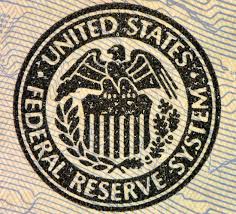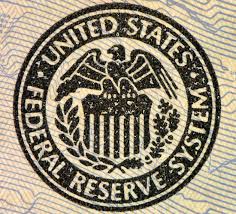
An improvement in the U.S. economy and the labor market were the reasons cited by the country’s Federal Reserve for raising of interest rates on Tuesday which was its third raise in 2017.
The benchmark interest rate was increased by 25 basis points to between 1.25% and 1.5% by the Fed. Just two of the board members gave their accent for the rising of the interest rates.
The low rate of unemployment at 4 % and the addition of about 228,000 jobs in November had prompted the Fed to conclude that the U.S. economy is chugging along.
However, inflation is a concern, which is under the target of 2%, and the Fed said that it would keep a close watch on this macro-economic indicator.
"This is clearly starting to weigh on them a little bit," says Lee Ferridge, head of North American macro strategy at State Street.
Despite this, five more rate hikes have been forecast by the Fed – two in 2019 and three next year.
In February next year, the Fed chair would see a change with Jerome Powell replacing Yellen. The former is expected to continue to function in a manner similar to his predecessor.
There has been an evident rebound in the market after the global financial crisis and in the U.S., there has been a gain of 19% in the S&P 500 just in 2017. The Fed’s plans to continue with the rate hike would however be tempered by a fall in the markets.
"If there's a downturn in the stock market, that could inspire Jerome Powell to go a little slower," said Charles Swab chief investment officer Brett Wander on a call with reporters last week.
Massive tax reforms appear to be set to be passed by politicians in the U.S. The way the Fed looks at the economy would be enhanced by such a move even as the impact of the reforms on the economy as well as the details of the legislation are still unclear. This despite the fact that the possible tax reforms have been referred to as economic "rocket fuel" by President Donald Trump.
"U.S. tax cuts could boost near-term growth and quicken the Fed’s pace," wrote Richard Turnill, BlackRock's global chief investment strategist, in a note to clients.
At the height of the financial crisis in 2-07-08, government bonds, mortgage-backed securities and other assets were purchased for trillions of dollars by the Fed and it is now in the process of reducing some those assets from its balance sheet.
The Fed plans to gradually bring to a halt the reinvestment of the money which would be shed from its portfolio. To start off, $4 billion in mortgage-backed securities and $6 billion in Treasury would be allowed to be matured every month by the Fed. The aim is to attain a level where there would remain $20 billion in mortgage securities and $30 billion in Treasurys.
(Source:www.forbes.com)
The benchmark interest rate was increased by 25 basis points to between 1.25% and 1.5% by the Fed. Just two of the board members gave their accent for the rising of the interest rates.
The low rate of unemployment at 4 % and the addition of about 228,000 jobs in November had prompted the Fed to conclude that the U.S. economy is chugging along.
However, inflation is a concern, which is under the target of 2%, and the Fed said that it would keep a close watch on this macro-economic indicator.
"This is clearly starting to weigh on them a little bit," says Lee Ferridge, head of North American macro strategy at State Street.
Despite this, five more rate hikes have been forecast by the Fed – two in 2019 and three next year.
In February next year, the Fed chair would see a change with Jerome Powell replacing Yellen. The former is expected to continue to function in a manner similar to his predecessor.
There has been an evident rebound in the market after the global financial crisis and in the U.S., there has been a gain of 19% in the S&P 500 just in 2017. The Fed’s plans to continue with the rate hike would however be tempered by a fall in the markets.
"If there's a downturn in the stock market, that could inspire Jerome Powell to go a little slower," said Charles Swab chief investment officer Brett Wander on a call with reporters last week.
Massive tax reforms appear to be set to be passed by politicians in the U.S. The way the Fed looks at the economy would be enhanced by such a move even as the impact of the reforms on the economy as well as the details of the legislation are still unclear. This despite the fact that the possible tax reforms have been referred to as economic "rocket fuel" by President Donald Trump.
"U.S. tax cuts could boost near-term growth and quicken the Fed’s pace," wrote Richard Turnill, BlackRock's global chief investment strategist, in a note to clients.
At the height of the financial crisis in 2-07-08, government bonds, mortgage-backed securities and other assets were purchased for trillions of dollars by the Fed and it is now in the process of reducing some those assets from its balance sheet.
The Fed plans to gradually bring to a halt the reinvestment of the money which would be shed from its portfolio. To start off, $4 billion in mortgage-backed securities and $6 billion in Treasury would be allowed to be matured every month by the Fed. The aim is to attain a level where there would remain $20 billion in mortgage securities and $30 billion in Treasurys.
(Source:www.forbes.com)





